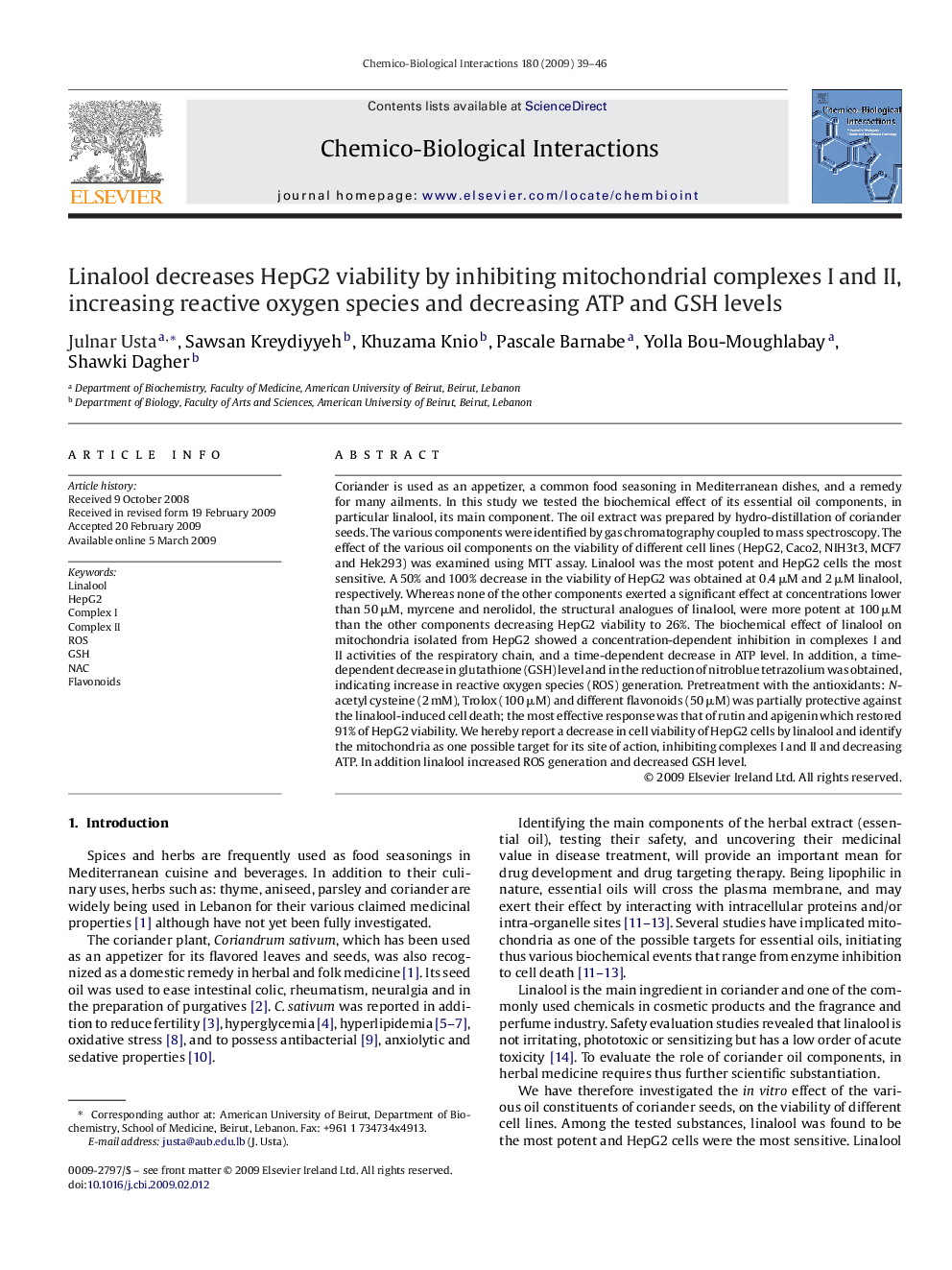| کد مقاله | کد نشریه | سال انتشار | مقاله انگلیسی | نسخه تمام متن |
|---|---|---|---|---|
| 2581361 | 1130187 | 2009 | 8 صفحه PDF | دانلود رایگان |

Coriander is used as an appetizer, a common food seasoning in Mediterranean dishes, and a remedy for many ailments. In this study we tested the biochemical effect of its essential oil components, in particular linalool, its main component. The oil extract was prepared by hydro-distillation of coriander seeds. The various components were identified by gas chromatography coupled to mass spectroscopy. The effect of the various oil components on the viability of different cell lines (HepG2, Caco2, NIH3t3, MCF7 and Hek293) was examined using MTT assay. Linalool was the most potent and HepG2 cells the most sensitive. A 50% and 100% decrease in the viability of HepG2 was obtained at 0.4 μM and 2 μM linalool, respectively. Whereas none of the other components exerted a significant effect at concentrations lower than 50 μM, myrcene and nerolidol, the structural analogues of linalool, were more potent at 100 μM than the other components decreasing HepG2 viability to 26%. The biochemical effect of linalool on mitochondria isolated from HepG2 showed a concentration-dependent inhibition in complexes I and II activities of the respiratory chain, and a time-dependent decrease in ATP level. In addition, a time-dependent decrease in glutathione (GSH) level and in the reduction of nitroblue tetrazolium was obtained, indicating increase in reactive oxygen species (ROS) generation. Pretreatment with the antioxidants: N-acetyl cysteine (2 mM), Trolox (100 μM) and different flavonoids (50 μM) was partially protective against the linalool-induced cell death; the most effective response was that of rutin and apigenin which restored 91% of HepG2 viability. We hereby report a decrease in cell viability of HepG2 cells by linalool and identify the mitochondria as one possible target for its site of action, inhibiting complexes I and II and decreasing ATP. In addition linalool increased ROS generation and decreased GSH level.
Journal: Chemico-Biological Interactions - Volume 180, Issue 1, 15 June 2009, Pages 39–46